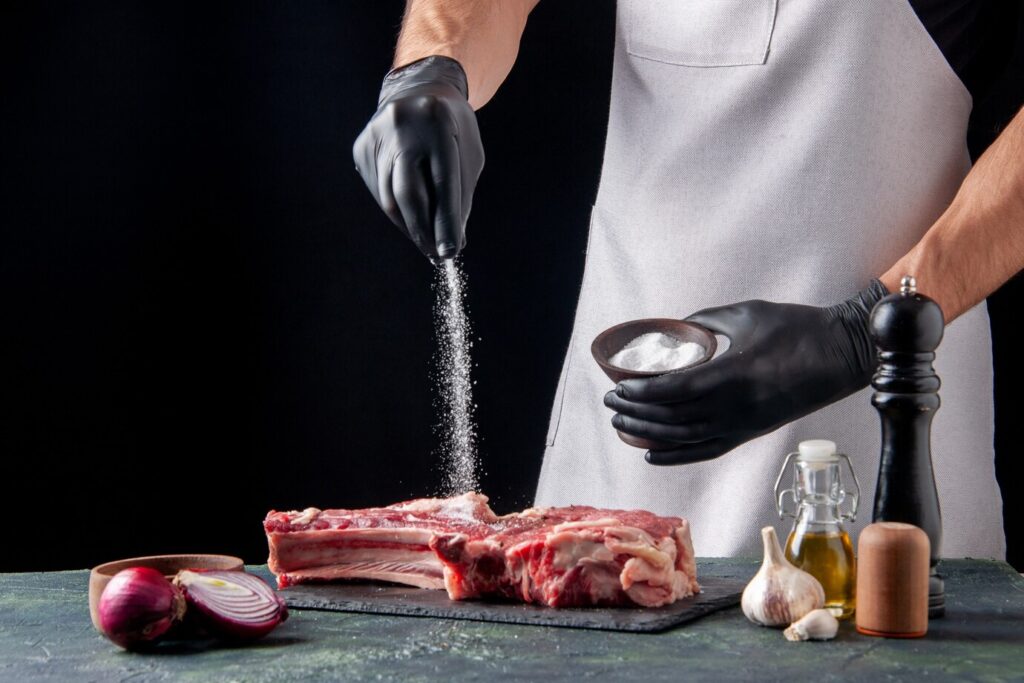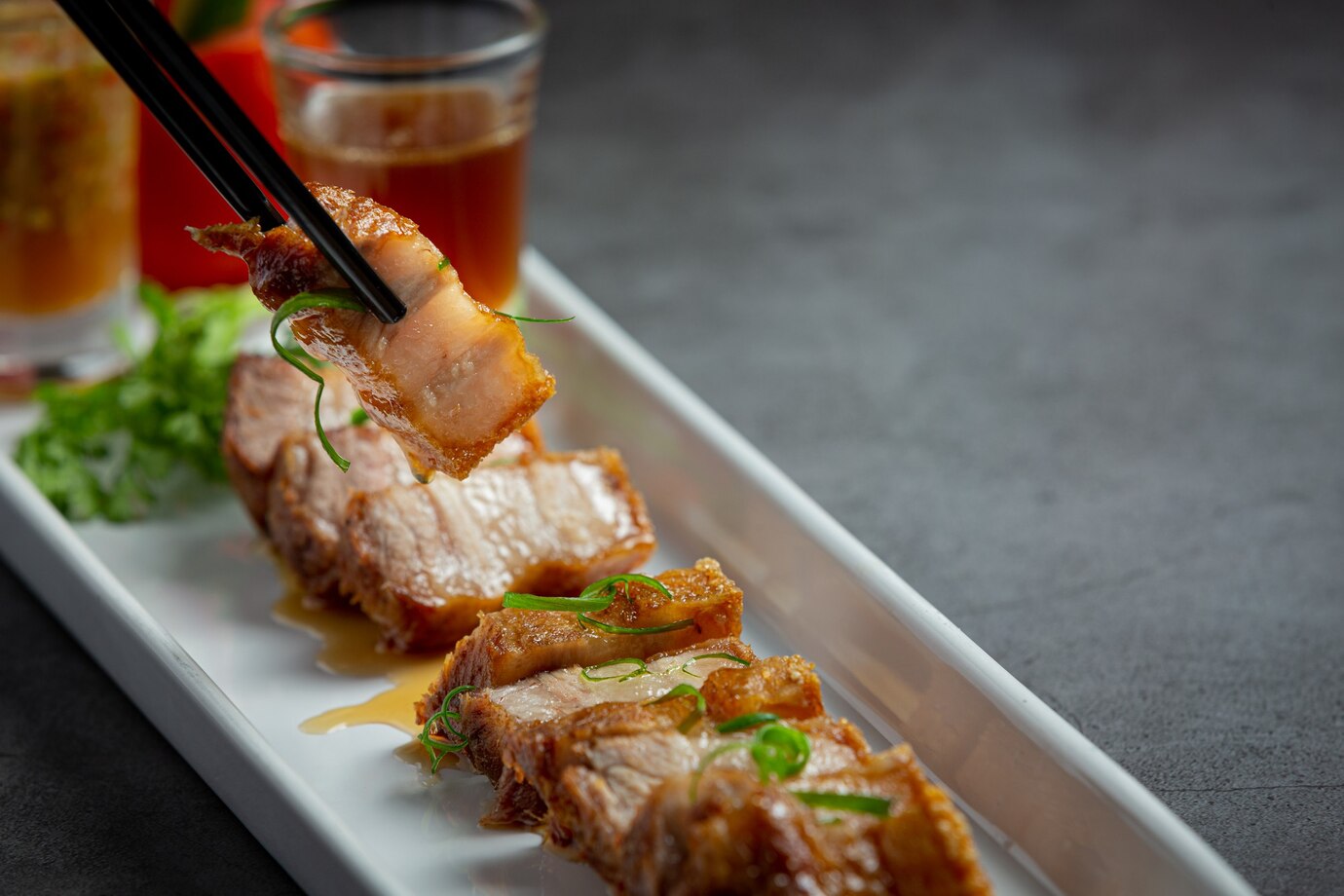The Food Blog

How to Cook the Perfect Steak Using Global Techniques
Cooking the perfect steak is both an art and a science, requiring the right technique, timing, and tools. Whether you prefer a smoky char from a grill, the precision of sous vide, or the rich crust from a cast-iron pan, mastering different global techniques can elevate your steak game. Each culture brings unique cooking methods to the table, from Argentina’s flame-grilled as do to Japan’s delicate teppanyaki. This guide explores strategies, tips, and expert insights to help you achieve steak perfection, regardless of your preferred style.
Core Concepts of Cooking Steak
Choosing the Right Cut

Steak selection plays a crucial role in achieving the best results. Some of the most popular cuts include:
- Ribeye – Richly marbled and flavoured, ideal for grilling and pan-searing.
- Sirloin – Leaner than ribeye but still flavourful, great for grilling or broiling.
- Filet Mignon – Extremely tender with a mild flavour, best suited for high-heat methods like pan-searing.
- T-bone & Porterhouse – Contains both tenderloin and strip steak, perfect for grilling.
- Flank & Skirt Steak – Best when marinated and cooked quickly over high heat.
Seasoning for Maximum Flavour
While steak purists argue that salt and pepper are enough, seasoning methods vary globally:
- American & European Approach – Simple salt and pepper, sometimes garlic butter.
- Argentinian Asado – Coarse salt and chimichurri sauce.
- Japanese Style – Minimal seasoning, focusing on umami and wasabi.
- Korean Bulgogi – Marinated in soy sauce, garlic, and sesame oil.
Cooking Temperature and Doneness
Different techniques require different levels of heat control. The general doneness guide:
- Rare – 50°C (Cool, red centre)
- Medium-Rare – 57°C (Warm, red centre)
- Medium – 63°C (Warm, pink centre)
- Medium-Well – 68°C (Slightly pink centre)
- Well-Done – 74°C+ (No pink, fully cooked)
Quick Guide to Global Steak Techniques
Sous Vide (French Style)
Cook steak in a temperature-controlled water bath for even doneness, then sear in a hot pan for a golden crust.
Grilling (American & Argentinian)
Start with a high-heat sear, then finish over indirect heat. Use chimichurri for a classic Argentinian twist.
Pan-Searing (European Method)
Use a cast-iron skillet with high-smoke-point oil. Sear both sides, baste with butter and aromatics, then rest before serving.
Teppanyaki (Japanese Style)
Cook thin steak slices quickly on a flat-top grill with minimal seasoning. Serve immediately with dipping sauces like ponzu or miso.
Step-by-Step Guide to Global Steak Cooking Techniques
1. Sous Vide (French Precision Cooking)
Sous vide, meaning “under vacuum,” ensures precise temperature control for a perfectly cooked steak.
Steps:
- Season the Steak – Use salt, pepper, and optional aromatics (garlic, thyme, rosemary).
- Vacuum-Seal – Place the steak in a vacuum-sealed bag or a zip-lock bag using the water displacement method.
- Water Bath – Set the sous vide machine to the desired doneness temperature (e.g., 54°C for medium-rare) and cook for 1-3 hours.
- Searing- Finish After removing the meat from the bag, pat dry and sear in a hot pan for 30-60 seconds per side to develop a crust.
2. Grilling (American & Argentinian Methods)
Grilling enhances the steak’s smoky flavour and creates an excellent crust.
Steps:
- Preheat Grill – Heat to high (260°C) for the initial sear.
- Sear Both Sides – Grill for 2-3 minutes per side over direct heat.
- Finish Over Indirect Heat – Move the steak to a cooler part of the grill and cook to the desired doneness.
- Rest – Let the steak rest for 5-10 minutes before slicing.
Bonus Tip: Asado-Style (Argentina)
- Use wood-fired grills for an authentic flavour.
- Cook over low heat for longer to allow the fat to render properly.
- Serve with chimichurri sauce (parsley, garlic, vinegar, oil, and chili flakes).
3. Pan-Searing (Traditional European Approach)
Pan-searing is a go-to method for achieving a rich, crispy crust.
Steps:
- Heat Cast-Iron Pan – Preheat to high heat with a high-smoke-point oil (avocado, canola, or clarified butter).
- Sear the Steak – Cook each side for 2-4 minutes, flipping only once.
- Baste with Butter – Add butter, garlic, and thyme, basting the steak for extra flavour.
- Check Temperature – Use a meat thermometer to ensure the perfect doneness.
- Rest the Steak – Allow the juices to redistribute before slicing.
4. Japanese Teppanyaki

Teppanyaki is a high-heat, flat-top grilling method that emphasizes precise cooking and umami flavours.
Steps:
- Heat a Flat-Top Grill – Preheat to high heat.
- Lightly Oil the Surface – Use a small amount of oil to prevent sticking.
- Cook in Thin Slices – Teppanyaki steak is often sliced into bite-sized pieces.
- Minimal Seasoning – Salt, pepper, and a light soy sauce drizzle enhance the natural flavour.
- Serve Immediately – Accompany with dipping sauces like ponzu or miso sauce.
Pro Tips for the Perfect Steak
- Use Dry-Aged Beef – For a deeper, more concentrated flavour.
- Reverse-Searing for Thick Cuts – Slow cook in the oven first, then sear at high heat.
- Cast iron Retains Heat – Ideal for an even crust.
- Use a Meat Thermometer – Avoid guessing; ensure precision.
Important Considerations
- Overcooking Can Dry Out Steak – Stick to target temperatures.
- Avoid Flipping Too Often – Let a crust develop.
- Room Temperature Before Cooking – Helps ensure even cooking.
Best Practices & Additional Insights
- Experiment with Different Wood Chips – Hickory, mesquite, or cherry wood for smoky flavours.
- Use Tongs Instead of a Fork – Prevents juice loss.
- Pair with the Right Wine – Red wines like Cabernet Sauvignon complement rich beef flavours.
FAQs
Q: How do I know when my steak is done?
A: Use a meat thermometer – rare (50°C), medium-rare (57°C), medium (63°C), well-done (70°C+).
Q: Can I cook a steak from frozen?
A: Yes, but it requires longer cooking times. Sous vide is the best method for frozen steak as it cooks evenly.
Q: What is the best oil for cooking steak?
A: High-smoke-point oils like canola, avocado, or clarified butter work best.
Q: Should I marinate my steak?
A: It depends on the cut! Tougher cuts like flank and skirt benefit from marination, while premium cuts like ribeye and filet mignon should be seasoned simply to highlight their natural flavours.
Master the Art of Cooking Steak
Mastering steak cooking techniques from around the world allows you to enjoy restaurant-quality meals at home. Whether you prefer the precision of sous vide, the smoky depth of grilling, or the sizzling theatre of teppanyaki, each method has something unique to offer. Experiment with different techniques and find the style that suits your taste buds best!









